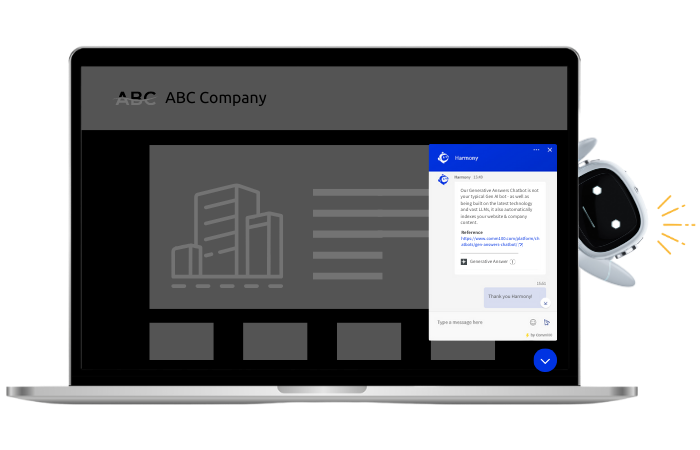As easy as it is to support customers with live chat, live chat customer support operations should never be run blindly. Knowing how your team is performing is the key to delivering great customer service.
By measuring the success of your live chat customer support team, you can understand where you need to improve to deliver a more positive customer experience. It also helps to develop stronger ties with your customers, as well as more effective communication with your employees. Understanding what you’re doing well is just as important as it can help you give positive reinforcement to your live chat agents and acutely channel your efforts for improvement.
Most live chat platforms come with some degree of reporting capacities, making it easy to monitor key performance indicators (KPIs). Here are the top six metrics that you can use to analyze the success of your support team.
1. CSAT
If your live chat customer service team has one main goal, it’s to make the customer happy. CSAT, or your Customer Satisfaction Score, is one of the best benchmarks for determining how happy your customers are with the service they have just received. The reason why is simple: they will tell you directly.
CSAT involves asking customers a straightforward question such as “How satisfied were you with the experience?” accompanied by a survey scale. Customer responses are recorded and can be used to improve the customer experience in immediate, actionable ways. If a customer marks an interaction as unsatisfactory, for example, supervisors can review the live chat history and address any service issues directly with the agent who assisted them. CSAT can also be used to show how your customer satisfaction is improving over the course of a given timeframe, or to see how satisfied your customers are compared to those of your competitors.
Most companies grade CSAT on either a 1-5 or a 1-10 star scale. For maximum effectiveness, implement your CSAT survey in the live chat window and set it to automatically pop up once an agent marks a chat as concluded. This will give you the freshest grades of your agents’ performance. CSAT surveys can also be sent to customers via email after a live chat experience.
See how you stack up: Comm100’s 2022 Benchmark Report found that the average live chat customer satisfaction (CSAT) rate increased by 1.6% from 2020 to 2021, hitting an all-time new benchmark peak of 84%.
Recommended reading: How to Create Customer Satisfaction Surveys: Ready-Made Templates, Questions & Tips
2. NPS
The NPS, or Net Promoter Score, is a great supplement for the CSAT score. The NPS asks your customers the question, “How likely are you to recommend our business, product, or service to a family member or friend?”
The NPS score uses a scale from 1-10, and allows you to categorize customers into three groups: promoters (customers that score a 9 or 10 on the survey), passives (customers who score a 7 or an 8), and detractors (customers who score below a 6). Your NPS is calculated by subtracting the percentage of detractors from the percentage of promoters.
With 45% of companies using NPS as the top measure of CX success, it is a key metric for any live chat customer support team. And, it’s easy to implement: you can get your NPS through the same post-chat survey as your CSAT rating. NPS are often industry-specific, meaning that the best way to use the NPS as a live chat metric is to ask customers about your customer service and see how your score compares with other customer service teams.
See how you stack up: Forrester Research found that the average Net Promoter Scores for companies in 14 industries last year ranged from single-digit negative scores to the mid-positive 30s.
3. Average resolution time
Average resolution time, or average handle time, tells you how long it takes on average for your agents to resolve your customer queries. A low average handle time can indicate that your team is doing a good job of handling live chat inquiries quickly and efficiently. It can indicate that your internal resources, such as your agent-facing knowledge base and canned responses, are doing their job well, and that any internal transfers are being enacted quickly and smoothly. It also points to chat concurrency, which is when an agent handles multiple chats simultaneously.
If your average resolution time is too high, it may mean that agents need some additional training, help, or SLA enforcement. If it seems exceedingly low, you might want to review agent performance or make sure that CSAT and NPS scores are where you want them to be. A speedy resolution doesn’t mean much if your live chat customers are ending the conversation early without the answers they need.
You can calculate the average resolution time by adding the chat duration in minutes to the total number of minutes spent in follow-up and dividing them by the number of chats. Having an omnichannel live chat solution will help you get this metric correct since follow-ups via email or another channel will appear in the history of the same initial live chat interaction. These can be timed and appropriately factored into the overall number.
See how you stack up: Comm100’s 2022 Benchmark Report shows that the average chat duration increased by 2% in 2021 to 11 minutes 9 seconds. This is likely due in large part to the increase in demand for accessible online support due to COVID-19.
4. Wait time
The average wait time shows how quickly your agents are picking up your visitors’ chats, and this is very important to today’s consumer. In fact, one of the top reasons that customers turn to live chat is because they want a fast response, and they don’t want to wait on hold over the phone.
Low wait times can help maintain or even improve customer satisfaction. Strict SLA policies, an agent-friendly platform, and AI chatbots can all help keep wait times at bay.
You can check your average wait time by accessing the ‘reports’ feature available in most live chat consoles. With Comm100 Live Chat, you can view visitors’ average waiting time across the whole team, a specific department, or a certain agent.
See how you stack up: Comm100’s 2022 Benchmark Report shows that the average wait time that the average wait time dropped 30% to 35 seconds in 2020, despite the pandemic.
Recommended reading: A Guide to Live Chat Queue Management
5. Customer service abandonment rate
Abandoned chats are chats that for one reason or another never get picked up by an agent. Either the agent doesn’t accept the chat or the customer exits out of the chat window before the chat can initiate.
A high customer service abandonment rate may be due to a high wait time. If your wait and abandonment rates are both high, it could point to a need to revisit staffing (even if only seasonally), expand hours, or invest in chatbots that will help lighten the load. Supervisors can also opt for auto chat distribution and auto-chat acceptance to ensure that chat requests aren’t being missed due to agent error.
You can see abandoned chats as part of a monthly, daily, or even last 30-minutes chat overview. This is also a helpful metric to look at on a department, team, and individual level to ensure your agents are performing according to standard.
See how you stack up: For chat and call centers, the average abandonment rate is 13.1%. For live chat, this should not exceed 5%.
6. Resolution rate
Without issue resolution, there is no customer satisfaction. Your resolution rate reflects the number of live chat requests you were able to resolve during a given period. Under this umbrella is also the FCR, or first contact resolution rate. This number shows the rate at which you were able to resolve customer inquiries in just a single chat session.
A high resolution rate is a good indicator of success. Companies with a resolution rate, especially first contact resolution, experience higher customer satisfaction because it indicates that customer has had their question resolved in their first interaction with the company, and doesn’t have to return again. This also typically leads to lower wait times as fewer customers have to join the queue to reconnect with an agent.
See how you stack up: FCR varies from company to company, depending on what services you provide and how complex your issues are. Calculate your current resolution rate, and set your FCR goals against yourself.
Wrap-Up
Measuring the success of your live chat customer support is more than just a reality check – it is an actionable step towards setting clear customer service goals that will drive lasting improvement.
By using live chat reports to assess these six metrics, you can stop customer satisfaction nosedives in their tracks, grow your customer base, and smartly scale your customer service operations.
Powerful live chat software
Offer real-time, personalized, efficient support that your customers and agents will love at 1/3 the cost of voice support.
Learn more
Comm100 Live Chat







